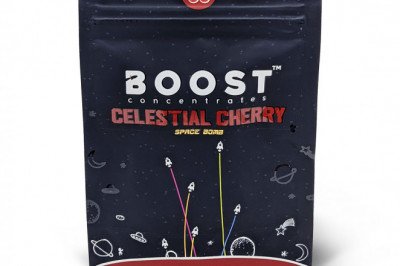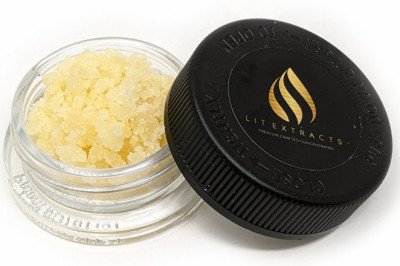The N-Butanol market size is estimated to reach US$14.3 billion by 2027 after growing at a CAGR of around 5.2% during the forecast period 2022 to 2027. The N-Butanol is a colorless liquid that is derived from propylene and also occurs as a product of the ethanol fermentation of saccharides and sugars. The use of N-Butanol as a solvent, coating and chemical intermediate for butyl acetate, ethers, and others offers major demand in the market, owing to its flourishing application in the building and construction sector, thereby creating a drive in the N-Butanol market. Furthermore, the rising adoption of bio-based N-Butanol and biofuel for application in automotive, chemicals, and others will boost the market demand during the forecast period. The covid-19 led to a slowdown in the growth of the N-butanol market due to a decline in demand and supply chain, halted production, and other lockdown restrictions. However, with recovery and bolstering growth across major end-use industries, the N-butanol market is growing rapidly.
Report Coverage
The “N-Butanol Market Report– Forecast (2022-2027)” by IndustryARC covers an in-depth analysis of the following segments of the N-Butanol industry.
By Grade: Pharmaceutical Grade, Industrial Grade, and Chemical Grade
By Feedstock: Conventional and Biobased
By Packaging: Drums, Bottles, Bags, and Others
By Application: Coating Resins, Butyl Carboxylates (Butyl Acetate, Glycol Ethers, Butyl Acrylate), Direct Solvent Use, Plasticizers, Fuels & Lubricants, and Others
By End-Use Industry: Paints & Coatings, Chemical and Petrochemical, Textile, Agriculture, Building & Construction (Commercial, Residential, Industrial, and Infrastructure), Food & Beverages, Transportation (Aerospace, Automotive [Passenger Vehicle, Light Commercial Vehicle, and Heavy Commercial Vehicle], Marine, and Locomotive), Pharmaceutical, Personal Care, Cleaning Industry, Plastics & Rubber Industry, and Others
By Geography: North America (USA, Canada, and Mexico), Europe (UK, Germany, France, Italy, Netherlands, Spain, Belgium, and Rest of Europe), Asia-Pacific (China, Japan, India, South Korea, Australia and New Zealand, Indonesia, Taiwan, Malaysia, and Rest of APAC), South America (Brazil, Argentina, Colombia, Chile, and Rest of South America), and Rest Of The World (Middle East [Saudi Arabia, UAE, Israel, and Rest of the Middle East], and Africa [South Africa, Nigeria, Rest of Africa])
Key Takeaways
- The Asia-Pacific dominates the N-butanol industry, owing to the flourishing construction and transportation sector, along with the rising adoption of biobased N-butanol for various applications, thereby offering steady growth of the N-butanol industry in this region.
- The increase in adoption of N-butanol-based biofuel and bioderived butanol due to its superior features such as more energy, compatibility, and environment-friendly by-products is boosting the market demand across major end-use industries.
- The building and construction industry dominates the N-Butanol market due to its wide range of applications in paints & coatings, solvents, varnishes, and others, owing to excellent features such as high performance, protection, decor, and durability.
N-Butanol Market Segment Analysis – By Type
The butyl carboxylates held the largest share of more than 65% in the N-Butanol market in 2021. The butyl carboxylate has increasing usage in the composition of various copolymers including butyl acetate, glycol ethers, butyl acrylate, and others. The increasing application of butyl carboxylate in engineering plastics in major end-use industries such as automotive, construction, and others is driving the market. Furthermore, the rise in construction projects and infrastructure development is boosting the growth in the market. According to Oxford Economics, the global construction output in 2020 accounted for US$ 10.7 trillion and is projected to grow by 42% to reach USD 15.2 trillion between 2020 and 2030. Furthermore, the Government of India, under the Union Budget 2021 allocated initiatives such as 'Housing for All' and the Smart Cities Mission worth USD 1.89 billion, thereby boosting the building and construction projects. With the flourishing application of butyl carboxylate for construction and others, the demand for butyl carboxylate in the N-Butanol industry is anticipated to grow rapidly during the forecast period.
N-Butanol Market Segment Analysis – By End-Use Industry
The building & construction segment held a significant share in the N-Butanol market in 2021 and is forecasted to grow at a CAGR of 5.1% during the forecast period 2022-27. The N-Butanol has major applications in the building and construction sector for residential and commercial buildings as a solvent, coatings, paints, varnishes, and others. This is due to its excellent advantages such as aesthetics, decor, and protection in the building and construction industry. The growing investments and development in construction projects are boosting the growth in the market. According to the Office for National Statistics, the monthly construction output in Great Britain rose by 1.7% in volume in March 2022, recording a monthly level high since 2010 volume. Furthermore, under the Make in India scheme by the Government of India, under Pradhan Mantri Awas Yojna-Urban (PMAY-U), around 52.55 lakh houses have been constructed by November 2021 out of 114.06 lakh houses sanctioned in India. Thus, the demand for N-Butanol for paint, coatings, varnish and other applications is growing rapidly, thereby boosting the growth of the building and construction industry in the N-Butanol market during the forecast period.
N-Butanol Market Segment Analysis – By Geography
The Asia-Pacific held the largest share in the N-Butanol market in the year 2021, up to 50%. The robust growth of N-butanol in this region is influenced by flourishing demand from construction, personal care, agriculture, automotive, and others. The rise in the transportation sector, majorly the automotive sector in APAC is boosting the demand for N-butanol due to its application in spark-ignition gasoline vehicles, internal combustion engines, and others. According to the Organization of Motor Vehicle Manufacturers (OICA), automotive production in China showed a 3% growth in 2021, compared to a 2% fall in 2020. Furthermore, the flourishing base for the construction sector in APAC is offering a drive in the market. According to the National Investment Promotion & Facilitation Agency, the construction industry in India is expected to reach US$ 1.4 trillion by 2025. Thus, with a flourishing base for major industries, the demand for N-butanol is accelerating thereby will boost the growth opportunities for N-butanol in the Asia Pacific region during the forecast period.
N-Butanol Market Drivers
Flourishing Demand From Transportation Sector
N-Butanol has major demand in the transportation sector for applications in bio-fuel, brake fluids, ignition engines, and others. The rise in production and established transportation sectors, including automotive, aerospace, marine, and the locomotive is propelling the growth in the market. For instance, BOEING forecasts that the commercial, general, and business aviation services will represent US$ 1.7 trillion by 2030. The rise in transportation across the world is influencing the demand for N-Butanol. According to the Bureau of Transportation Statistics (BTS), the North American transborder freight was 23.8% up in March 2022 compared to March 2021. Thus, with the rising transportation industry from automotive, aerospace, marine, and others, the demand for N-Butanol is growing, owing to its wide range of applications in transportation for engine ignition, biofuel, and others; thereby the N-Butanol industry is experiencing major growth opportunities.
Emerging Trends in Bio-derived N-Butanol or Biofuel
N-Butanol has flourishing demand as biofuel and is preferred across various sectors. The demand for biofuel is growing rapidly due to rising emphasis on the reduction of VOC content, greenhouse gas emissions, and volatility in crude oil prices. Thus, biofuel production is emerging as the latest trend. According to the International Energy Agency (IEA), the global demand for biofuels is expected to grow by 41 billion liters or 28%, over the period 2021-2026. The biobased N-Butanol is produced from cellulose by over-expressing aldehyde dehydrogenase. Thus, with the emerging trends and demand for biofuels, the demand for bio-derived n-butanol fuels is experiencing high traction, thereby boosting the growth opportunities in the market.
N-Butanol Market Challenges
Stringent Regulations and Environmental Issues of N-butanol
The N-butanol-based solvent systems have health impacts and environmental threats. The acute health hazards include headache, dizziness, seizures, and unconsciousness. The Volatile Organic Compounds (VOC) emissions through butanol-based paints and coatings create a severe impact on the environment. Moreover, the regulatory policies and regulations on the usage of high emission paints and coatings are issued. For instance, the EU Construction Products Regulation (CPR), DIN EN 16516, and others regulate the production of high VOC concentrated N-butanol-based coatings. Thus, with major environmental threats and restrictions on the production of harmful VOC concentrated
Global N-Butanol Industry Outlook
Technology launches, acquisitions, and R&D activities are key strategies that are adopted by the dominant players in the N-Butanol market. The N-Butanol top 10 companies are:
1. BASF SE
2. INEOS Oxide Ltd
3. SABIC
4. Eastman Chemical Company
5. The Mitsubishi Chemical Company
6. Solventis
7. Galaxy Chemicals
8. The DOW Chemical Company
9. Texmark Chemicals Inc.
10. OQ SAOC
Recent Developments
- In November 2021, the researchers at WUSTL University discovered a new way to train microbes for the production of N-Butanol. The resulting n-butanol biofuel is produced from sources such as carbon dioxide, solar-panel-generated electricity, and light, thereby offering sustainability.
- In February 2020, the DOW Chemical Company and Johnson Matthey announced that Guangxi Huayi New Material Company selected LP SELECTOR 10 technology for the production of butanol at the manufacturing plant, thereby boosting the growth and expansion in the market.
- In February 2020, TASNEE and SABIC signed a contract for butanol supply. This contract will provide additional quantities of butanol products for use as feedstock in butyl acrylate, thereby boosting the demand for butanol products in the industry.
Relevant Reports
Report Code: CMR 0339
Report Code: CMR 37968
Report Code: CMR 33157
For more Chemicals and Materials Market reports, please click here











